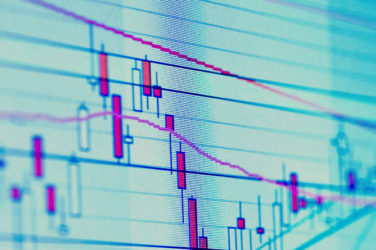The continual expansion of electronic trading in the US Treasury market is forcing the market to evolve and putting market participants and regulators under the gun to make the necessary changes, according to research published by industry analysis firm Celent.
Brad Bailey, research director, securities and investments at Celent and author of “Rates Revolution- US Treasuries: Technology for a Fragmenting Market,” told Markets Media that he was not sure the market nor its regulators could or would change the structure of the US Treasury market short of another financial crisis.
“That often seems to be the case,” he said. “Unfortunately we don’t know when or where the next crisis is going to come from. It’s like the generals who always fight the last war.”
However, he does not see the current market as broken, even with the October 2014 ‘flash crash’, but merely evolving due to increased electronic trading and the advent of new liquidity providers.

Brad Bailey, Celent
“The October 15 flash crash was not like what happened in equities in May 2010,” explained Bailey. “There was a lot of liquidity at a lot of trading points. The question should be whether rates should move that much? That is something completely different.”
As dealers left their market-making roles after 2008, 2010, and 2011 due to new regulations and a decreasing appetite for risk, principal trading firms filled the vacuum.
“Principal trading firms became very important in proving liquidity to the dealer community for laying off their risk and things like that,” said Bailey.
As more PTFs joined the US Treasury market, it has only increased the pressure on the US Securities and Exchange Commission to disseminate a consolidated tape, which he views as inevitable.
“You can see why people would not want it, but it’s a byproduct of electronic trading,” said Bailey. “As more electronic trading takes place, commissions and trade costs go down, which forces you into more electronic trading: It’s a circle.”
He noted that FINRA’s requirement that all Treasury traders enter their Treasury trades into the regulator’s TRACE database beginning July 10, should not surprise anyone.
“It’s funny to think how long we have had TRACE in credit but not in Treasuries,” said Bailey. “Now they are going to collect it for Treasuries and that inevitably continue. It might start at the end of the day, but I can see them move up the time frame.”
From a regulatory perspective, Bailey doubted that regulators would make any radical changes to the market’s current structure in the near term.
“They likely will be a little more flexibility in market regulations given the people that the Trump Administration has tapped to fill the vacancies within the prudential regulators,” he said. “I’m not saying that they will roll back the Volcker Rule or change anything within Dodd-Frank. They probably are thinking how they are going to enforce existing regulations while providing a little more flexibility in the process.”






